Malfunctions of a semi-automatic washing machine with a centrifuge
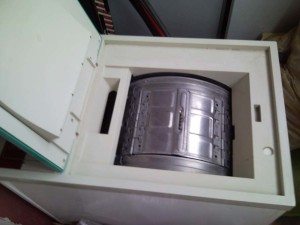 In the age of automatic washing machines, everyone has somehow forgotten about the “good old” semi-automatic equipment and how it works. We remember such machines, as a rule, only at the dacha, solving our everyday problems with the help of these “toilers”. You begin to truly appreciate a washing machine when it breaks down. What to do in such a situation, call a specialist, or carry out the repairs yourself? Everything will depend on the nature of the malfunction and much more.
In the age of automatic washing machines, everyone has somehow forgotten about the “good old” semi-automatic equipment and how it works. We remember such machines, as a rule, only at the dacha, solving our everyday problems with the help of these “toilers”. You begin to truly appreciate a washing machine when it breaks down. What to do in such a situation, call a specialist, or carry out the repairs yourself? Everything will depend on the nature of the malfunction and much more.
Description of common breakdowns and their causes
Semi-automatic washing machine has a fairly impressive list of breakdowns that are associated with its specific design. Let's look at them.
When the spin is activated, the engine does not start - it does not work. A serious problem that can be caused by burnt contacts or broken power wires going to the electric motor. In this case, immediate repair is required. The mechanical timer, temperature sensor, or the motor itself may also be faulty. The capacitor or relay responsible for starting the engine does not work. The transformer has burned out or the motor brushes have worn out - you need to disassemble and repair the motor.
The engine has started, but the centrifuge drum does not rotate. This problem occurs when there is too much wet stuff in the tank. The second option is that the brake is not working properly, blocking the rotation of the drum. Also, the centrifuge drum will not rotate if there is too much water in the tank, and even more so if large foreign objects, such as laundry, have gotten into it. Repairs are often not required here.
When the engine of the semi-automatic Slavda (or other) machine is running, the drum is blocked and does not rotate. There are usually two reasons for this malfunction:
- Firstly, the laundry in the drum is laid on one side. This leads to the fact that, under the influence of centrifugal force, the rotor swings and strongly hits the edges of the tank - spinning is impossible and the machine does not work.
- secondly, if a semi-automatic machine with a centrifuge has already been in use for some time, its bushings may be broken. With broken bushings, normal rotation of the rotor is also impossible. If the bushings are broken, repairs are needed.
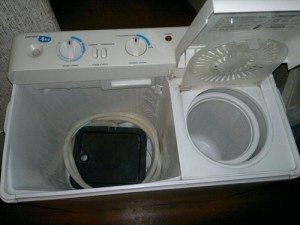 During the spin cycle, water flows from a semi-automatic machine with a centrifuge. In this case, there are quite a few possible causes of the malfunction, let's list them.
During the spin cycle, water flows from a semi-automatic machine with a centrifuge. In this case, there are quite a few possible causes of the malfunction, let's list them.
- The tank is leaking and is leaking water.
- The connecting elements and the connections between the hoses and the centrifuge units are broken or loosened. Most often, the connection between the hose and the pump or tank.
- The diaphragm or its fastenings are broken.
- The drain valve cuffs are worn out and do not hold water.
- The drain pump has damage to its housing.
- The drain valve is faulty - the opening/closing mechanism does not work.
- One of the pipes or hose has leaked.
- The rubber seals on the drain pump cover are worn out and do not hold water.
The drain pump does not drain or does not drain waste water well from the centrifuge tank; in general, it does not work normally. The reason for this may be a serious blockage in the drain pump or hose of the semi-automatic Slavda (or other) washing machine. Or the impeller blades have broken, causing the pump to turn on and run, but the water will drain extremely slowly. Poor drainage can also occur if laundry gets into the drain hole of the centrifuge, or the drain hose is accidentally pinched.
Water flows from tank to tank. If water from the washing machine tank tries to leak into the centrifuge tank, this can only mean one thing - a problem with the bypass hole. More precisely, the problem is in the valve; if its rubber gasket has worn out and no longer holds water, that’s where the problem comes from. Repair needed.
What if a semi-automatic machine with a centrifuge does not turn on at all? The cause may be a faulty power supply wire, plug, or relay. In addition, a similar “symptom” can occur when the electric motor burns out. Electrical repair required.
If the engine is running but the drum refuses to rotate. In this case, there is only one problem - the drive belt. It can come off or tear, and the drive is naturally not provided. Repair needed.
Note! In addition to the above malfunctions, other problems can often arise with semi-automatic machines that cannot be called a malfunction in the literal sense of the word. For example, problems with the water level sensor can be solved by straightening the drain hose.
What tools and materials are needed for repair work?
It is quite difficult to identify the complete set of tools and materials that will be required to carry out repair work on a washing machine with a centrifuge. Everything will depend on the nature of the breakdown and the model of the semi-automatic washing machine, but in general the following list can be noted:
- pliers;
- flat and Phillips screwdrivers;
- automotive sealant or cold welding;
- multimeter, pliers;
- set of heads and open-end wrenches (from 6 to 24 mm);
- capacitor, relay of the appropriate type;
- brushes for commutator motor, transformer;
- washing machine and centrifuge tank;
- suitable clamps, hoses, pipes;
- membranes, cuffs, diaphragms, valves, bushings.
Note! You don’t need to buy all of the above components; start from a specific breakdown and select parts based on it, while simultaneously studying the structure of your washing machine.
Finding and fixing the problem yourself: procedure
As we said above, the number of typical malfunctions of a Slavda (or other) semi-automatic washing machine cannot be called small. However, if we classify these faults and propose a procedure for eliminating them, it turns out that not everything is as complicated as it seems at first glance. So, as the first point of classification, we will indicate problems with the electrics of a semi-automatic washing machine. We offer you a procedure for how to detect, identify and eliminate them.
- Check the power cord and plug for faults.
- We open the dashboard of the washing machine (the procedure for disassembling the panel depends on the model of the washing machine).
- We take a multimeter and check all contacts for breaks or very low voltage.
- We find and check capacitors and relays with a multimeter. If we find a faulty part, we replace it - there is no point in repairing it.
- Next, we check the step-down transformer and, in the same way, if a problem is detected, we replace it with a similar one.
- We check all contacts for burns, only after that we climb into the electric motor and inspect the brushes for wear, and if necessary, change them.
We will call the second point of the classification as follows: problems with flooding, leakage and drainage of water. Here is a procedure for troubleshooting such problems.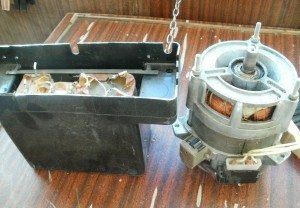
- First, we check with our own hands all the hoses and pipes that we can get to without disassembling the washing machine for leaks.
- We open the body of the Slavda machine or any other and get to the drain pump.
- We check the pump for visible damage, then disconnect it from the housing, clean it, and then screw it back on.
- We check the gaskets, membranes and diaphragm; if we find even the slightest defect, we replace it.
- We remove the tank of the washing machine with a centrifuge and check it for holes and cracks. Use automotive sealant or cold welder to seal the hole. Let the sealant dry before putting the car back together.
And finally, we will designate the third point of the classification as: problems with the moving elements of the Slavda washing machine (or any other). The moving elements of the machine include the engine and drive elements that rotate the drum. So, the procedure for finding and eliminating such faults.
Important! Before looking for such faults, pay attention to how you distribute the laundry in the centrifuge drum. After all, if you lay out the laundry unevenly, you can create an imbalance that interferes with the operation of the unit.
First, we check the drum for interaction with the brake system. If the drum catches on the brakes while rotating, this prevents it from performing its function normally; in fact, it does not work properly. Next, you need to remove the centrifuge drum and inspect the tank for the presence of foreign objects; if any are found, they need to be removed. At the same time, we inspect the bushings of the Slavda semi-automatic washing machine (or any other), if signs of wear appear on them, they need to be changed.
The next step is checking the condition of the drive belt. It must be tensioned tightly and ensure normal transmission of engine speed. If the belt is torn or cracked, repair is not needed, it should be replaced - no ties or twists are allowed!
To summarize, we note that a modern semi-automatic washing machine cannot be called a simple device, but there are no great difficulties in its internal structure either. If you act in accordance with the suggested advice from experts, take your time and take steps step by step, it is quite possible to repair such a semi-automatic machine with your own hands. Good luck!
Interesting:
21 reader comments
Add a comment Cancel reply
Categories
Washing machine repair


For buyers

For users

Dishwasher




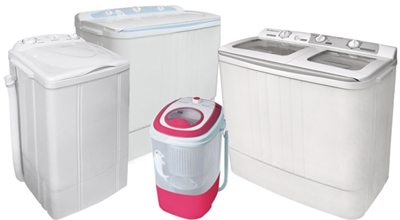
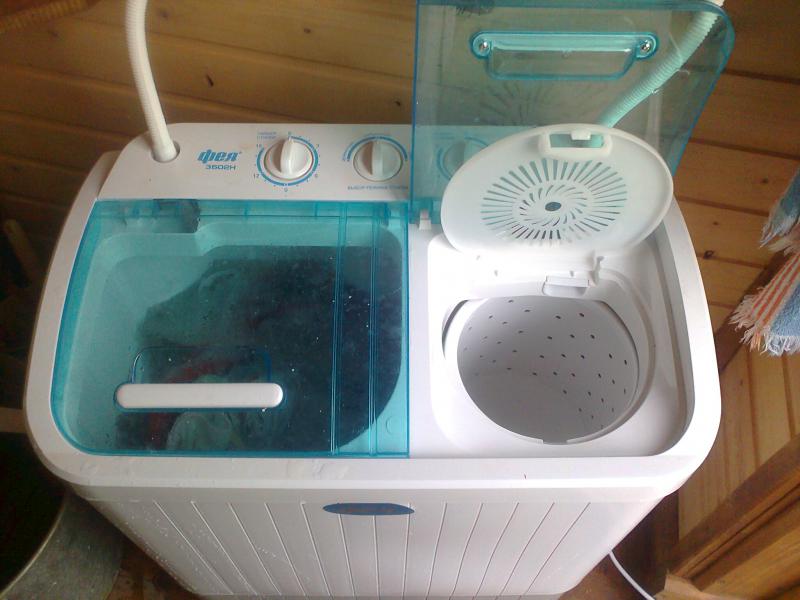











The centrifuge does not work, the spin cover is broken, and that is why it does not work. How to fix it?
The spinner rotates without a drum, but does not rotate with a drum, semi-automatic Assol
Look at the starting winding capacitor.
Please tell me what could be the matter if the centrifuge engine hums but does not turn? I twist it with my hand - the movement is easy, I tried to remove the belt, but the horseradish just buzzes. The machine is an old Saturn semi-automatic.
Check the capacitor
One of the two motor windings burned out.
Please tell me: semi-automatic Renova, the centrifuge very suddenly began to creak terribly when spinning. The brake is fine.And one more thing: we can’t take it apart properly, we just unscrewed the cap from the back.
The only problem I have with the centrifuge is that the motor works, but the drum does not spin. Sometimes it starts spinning, only gains the required speed and then loses speed, but the motor continues to work. What is the problem?
The centrifuge does not work, the spin cover is broken, and that is why it does not work. How to fix it?
I need a lid for the centrifuge, the one that goes on top of the laundry, a machine from Satyrn. I can’t find it, maybe it’s called differently, help?
Good afternoon. Tell. The centrifuge is not working. When spinning, the blade (located at the bottom) rotates at high speed, but the drum does not. At the same time, the water is drained. What to do?
The centrifuge motor jerks but does not start.
Where to buy a centrifuge for Renova 70?
The motor and shaft rotate, but the drum does not. Tell me, what is the reason?
Washing machine Chaika. New, never used. When the wash timer is turned on, the motor does not run. Possible reasons?
In the semi-automatic washing machine Krista kr-70, the centrifuge motor is running and the shaft is rotating (easily by hand). The drum does the same, but it doesn’t pick up speed when washing, even when it’s empty, the engine gets hot. The problem is old. Sometimes it still worked. What problems might there be?
Is it possible to connect a centrifuge directly without a timer and how?
The centrifuge runs idle and does not rotate when loading.
Hello, please tell me how to fix a semi-automatic centrifuge?
The machine is semi-automatic. The centrifuge does not pump out water. What is the reason?
Hello, the machine is semi-automatic, it has been in use for less than a month, the timer works, but the drum does not spin or make noise when starting, the drain and centrifuge are working, possible reasons?